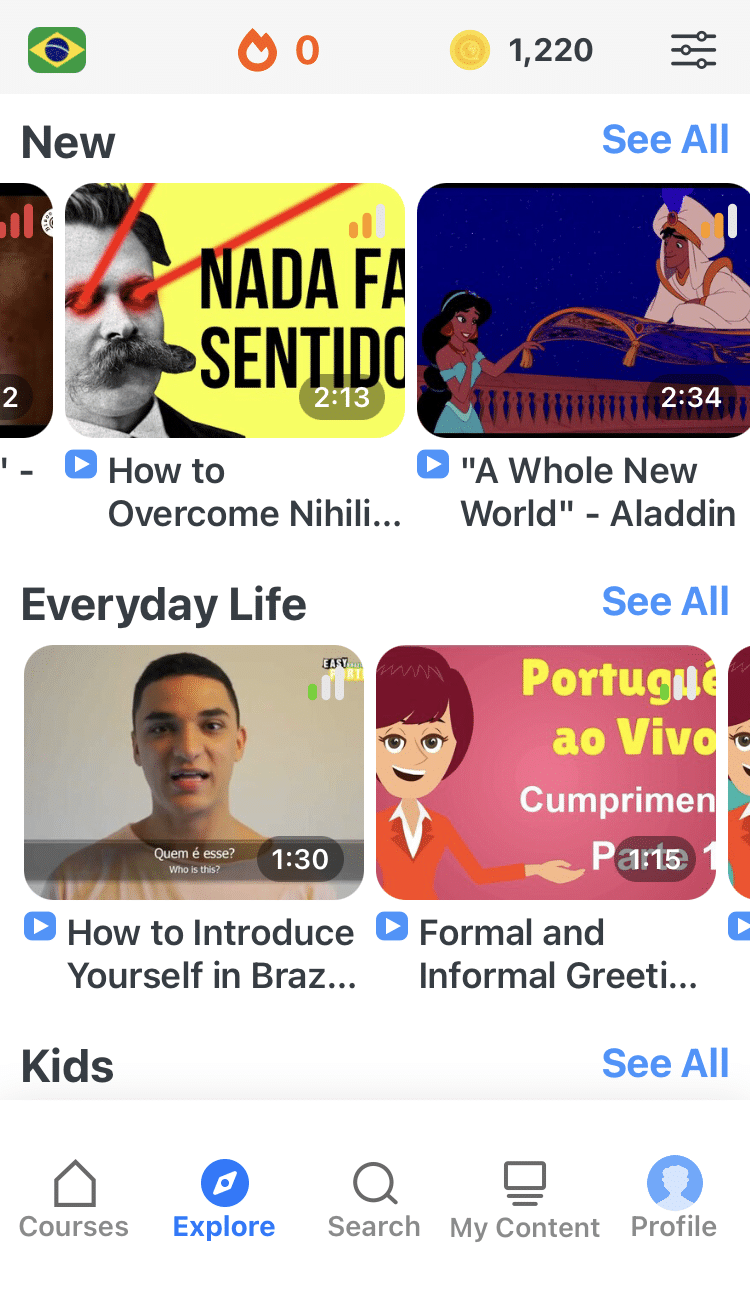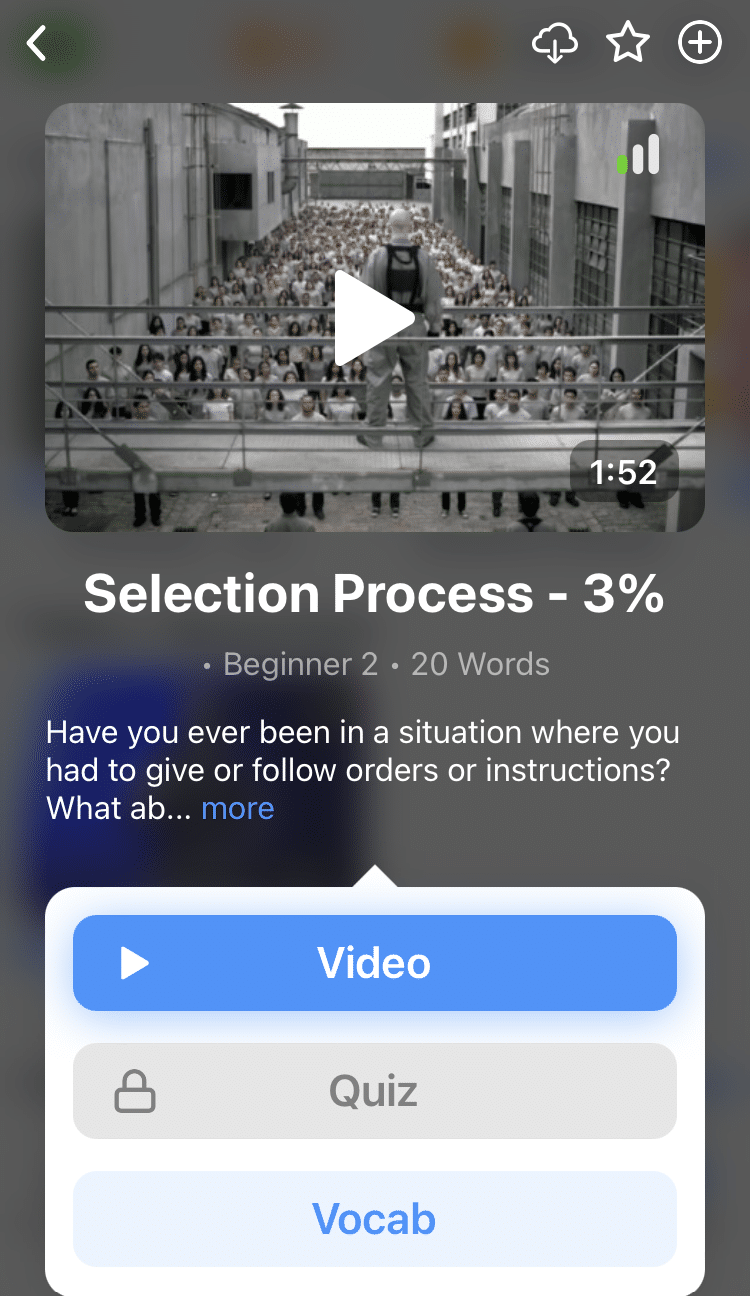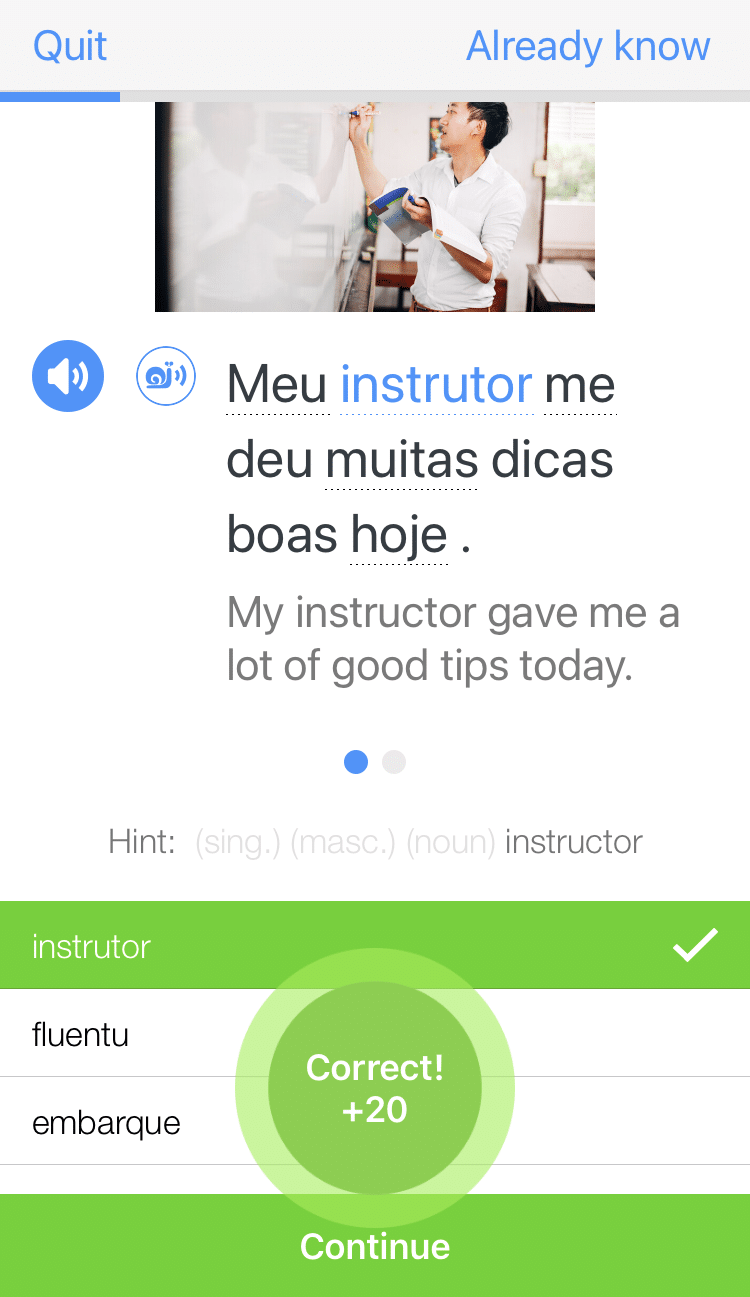
9 Ways to Say “You’re Welcome” in Portuguese
Thanks come in different intensities, from the casual “thanks for holding the door open for me” to the heartfelt “thank you for being such a good friend.” So it’s no surprise that there are various degrees of “you’re welcome,” too.
If someone says “obrigado” (thank you) to you, would you know the right way to say “you’re welcome” in Portuguese? Learn how to respond to expressions of gratitude, no matter what the situation is.
Contents
- 1. De nada — You’re welcome
- 2. Por nada — For nothing
- 3. Disponha — At your disposal
- 4. Foi um prazer — It was a pleasure
- 5. Eu é que agradeço — I am the one who thanks
- 6. Não há de quê — There is no reason
- 7. Sempre às ordens — Always at your service
- 8. Sem problemas — No problem
- 9. Imagina — Imagine
- And One More Thing…
Download: This blog post is available as a convenient and portable PDF that you can take anywhere. Click here to get a copy. (Download)
1. De nada — You’re welcome
This is the most common way to respond when someone says obrigado (thank you). While it literally means “it was nothing,” it’s the closest in meaning to “you’re welcome” in English.
You can use this expression to respond to everything from someone thanking you for holding the door open for them to a colleague thanking you for your help with a job. For example:
De nada, foi um prazer trabalhar juntos. — You’re welcome, it was a pleasure working together.
2. Por nada — For nothing
This is another way to respond to someone expressing gratitude. It directly translates to “for nothing” or “it’s nothing” and its usage is similar to the English expression “don’t mention it.”
3. Disponha — At your disposal
Disponha is used in response to someone thanking you for a favor or service. It conveys a sense of availability and willingness to assist further and it’s generally used by older people.
4. Foi um prazer — It was a pleasure
Like the English translation, this phrase expresses that you enjoyed helping or interacting with someone. You’re telling someone that whatever they were thanking you for was a pleasure to assist with.
A variation of this expression is com prazer (with pleasure).
5. Eu é que agradeço — I am the one who thanks
This phrase turns the thanks back to whoever is expressing gratitude to you. It’s a way to say “I’m the one who’s grateful,” placing the emphasis on the “I.”
6. Não há de quê — There is no reason
Use this phrase to convey that there’s nothing to thank you for, similar to saying “it was nothing” in English. It’s a polite way to acknowledge thanks while downplaying the effort made.
Another way to say this is não tem de quê — it was nothing.
Want more context for this phrase and the others in this list? A program like FluentU can help through many examples in real-life situations. The program uses short video clips from authentic Portuguese media to teach you the language.
FluentU takes authentic videos—like music videos, movie trailers, news and inspiring talks—and turns them into personalized language learning lessons.
You can try FluentU for free for 2 weeks. Click here to check out the website or download the iOS app or Android app.
7. Sempre às ordens — Always at your service
When you want to convey that you’re always willing to help some more, this is the expression to use. A few variations abbreviate the expression: Às suas ordens (At your orders) and Às ordens (At orders)
8. Sem problemas — No problem
Sem problemas in Portuguese translates to “no problems” or “no issues” in English. It’s a casual way to say “you’re welcome” or to convey that there were no difficulties in helping someone.
9. Imagina — Imagine
While this literally translates to “imagine,” you can use it to mean “you’re welcome” or “don’t mention it.” For example:
Imagina, foi um prazer ajudar. — You’re welcome, it was a pleasure to help.
There’s no need to thank me for helping you learn the different ways to say “you’re welcome” in Portuguese. Just get out there and start using them!
And One More Thing…
If you've made it this far that means you probably enjoy learning Portuguese with engaging material and will then love FluentU.
FluentU takes authentic videos—like music videos, movie trailers, news and inspiring talks—and turns them into personalized Portuguese lessons.
Other sites use scripted content. FluentU uses a natural approach that helps you ease into the Portuguese language and culture over time. You’ll learn Portuguese as it’s actually spoken by real people.
FluentU has a wide variety of videos, as you can see here:

FluentU brings native videos within reach with interactive transcripts. You can tap on any word to look it up instantly. Every definition has examples that have been written to help you understand how the word is used. If you see an interesting word you don’t know, you can add it to a vocab list.

Review a complete interactive transcript under the Dialogue tab, and find words and phrases listed under Vocab.

Learn all the vocabulary in any video with FluentU’s robust learning engine. Swipe left or right to see more examples of the word you’re on.

The best part is that FluentU keeps track of the vocabulary that you’re learning, and gives you extra practice with difficult words. It'll even remind you when it’s time to review what you’ve learned. Every learner has a truly personalized experience, even if they’re learning with the same video.
You can try FluentU for free for 2 weeks. Click here to check out the website or download the iOS app or Android app.



